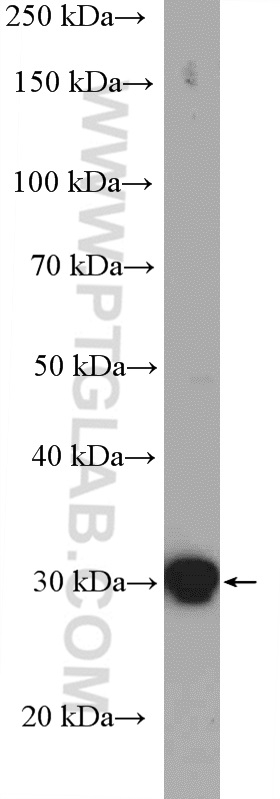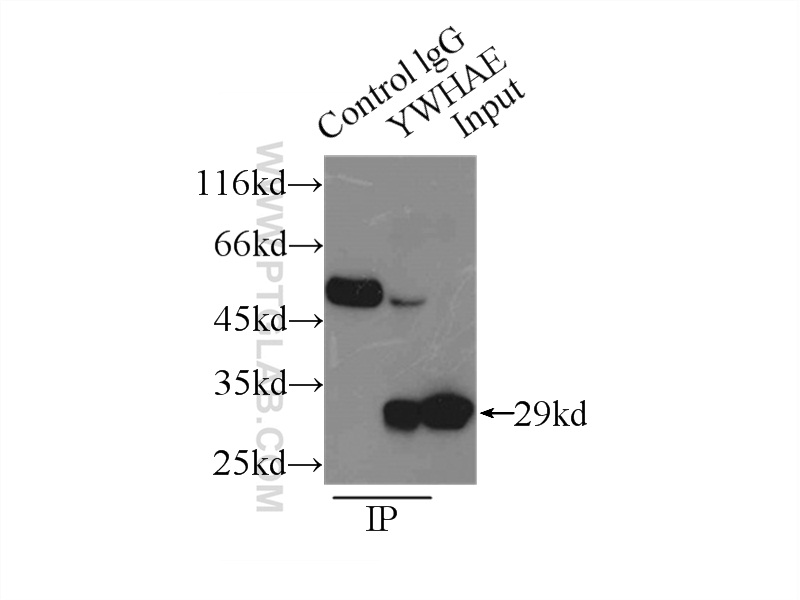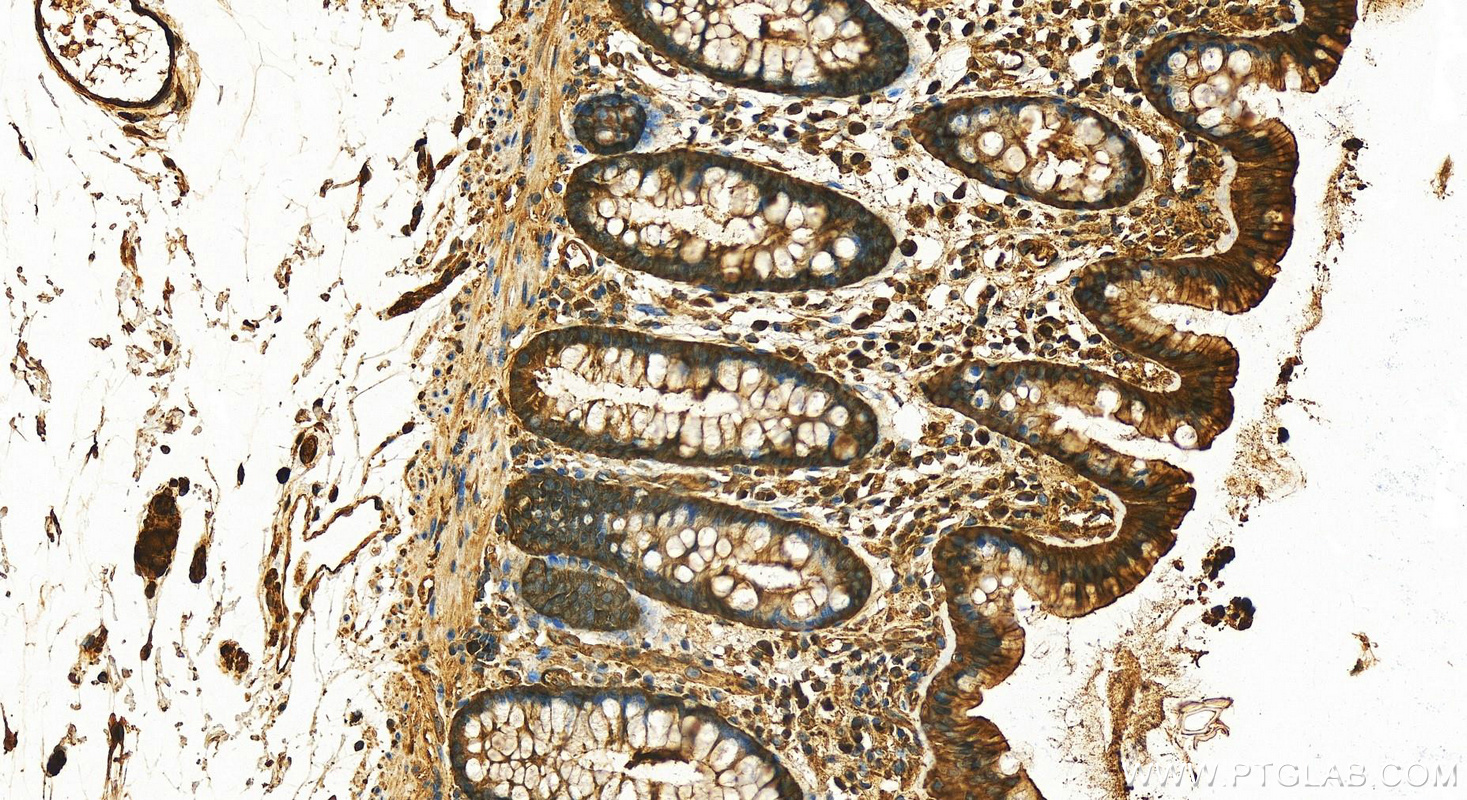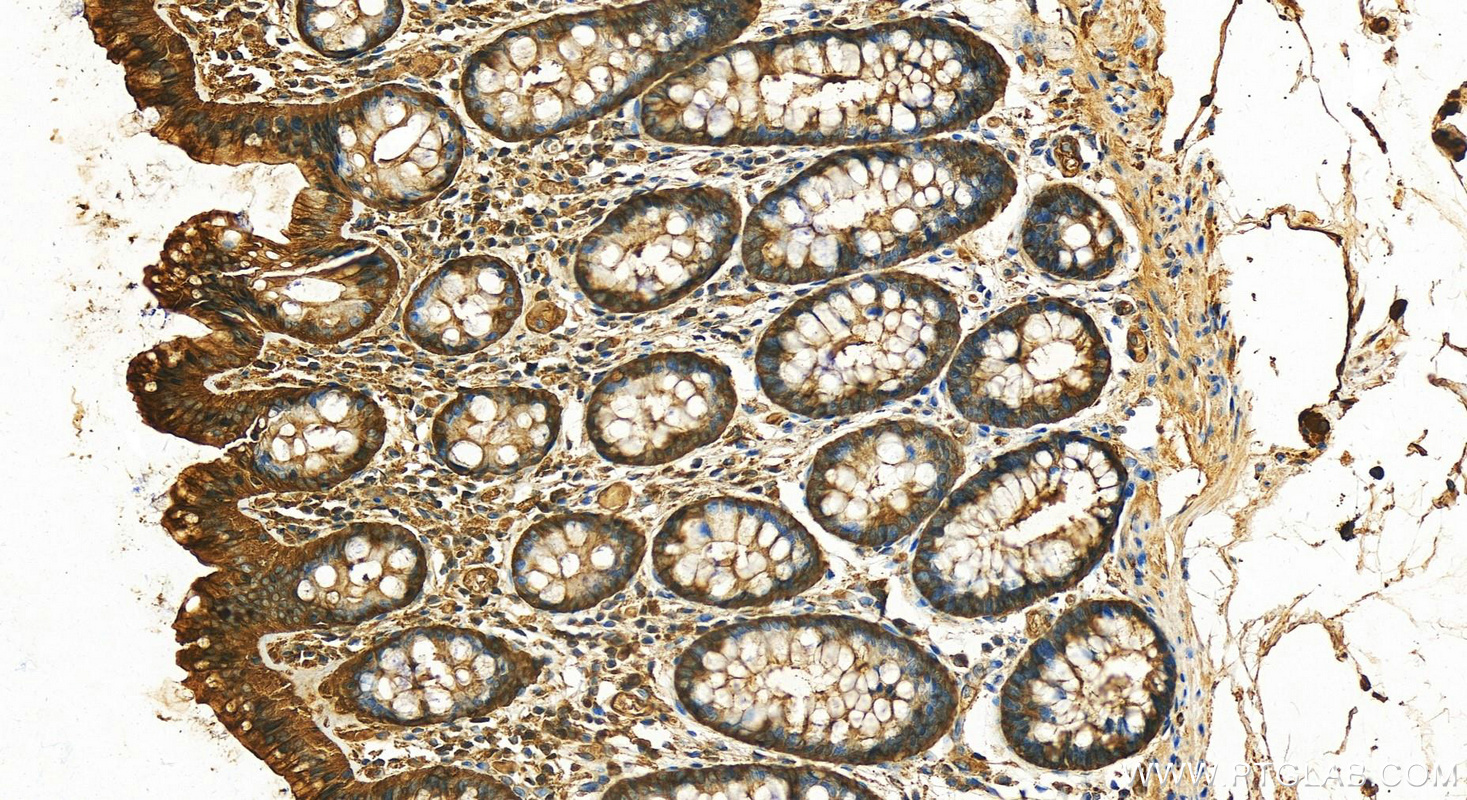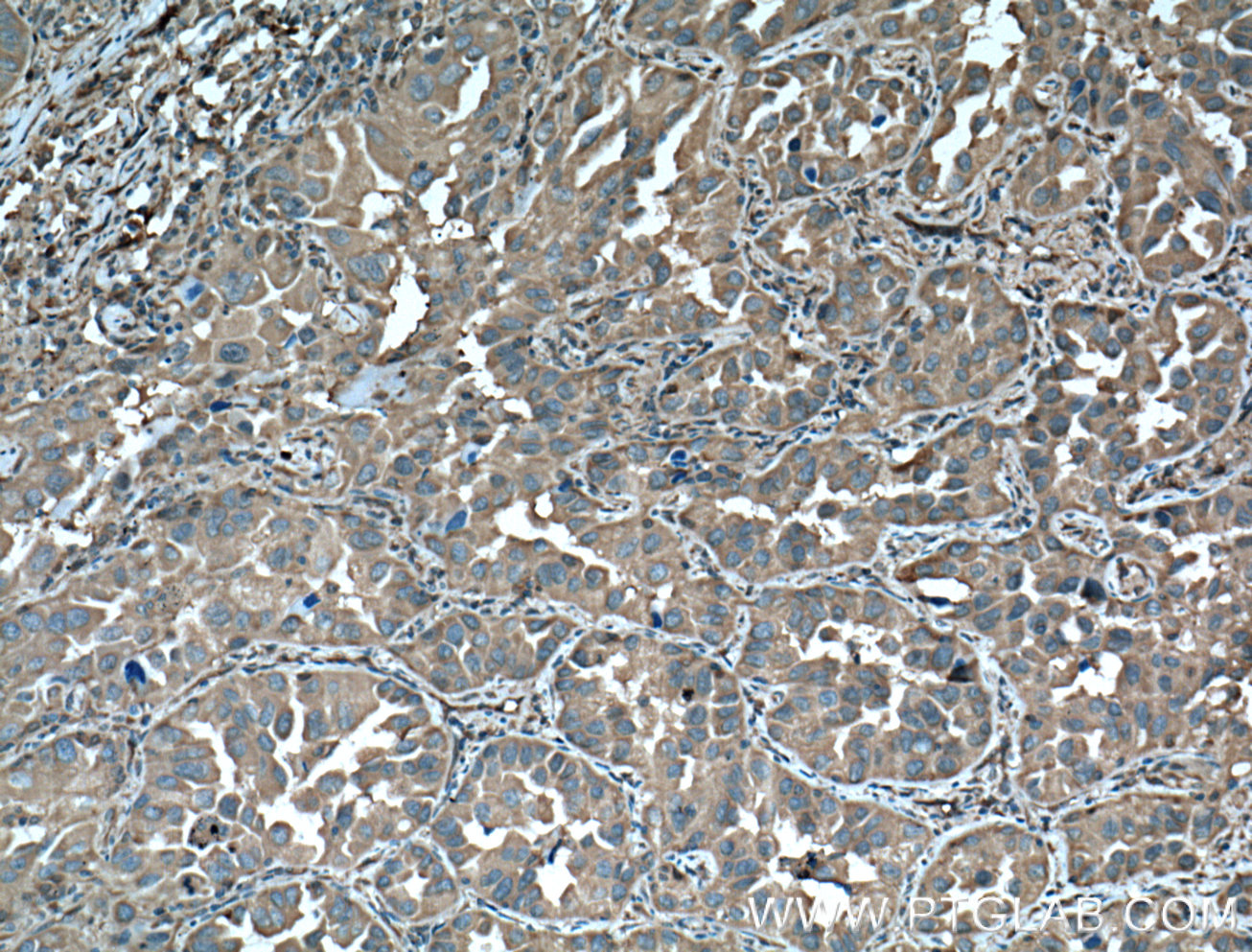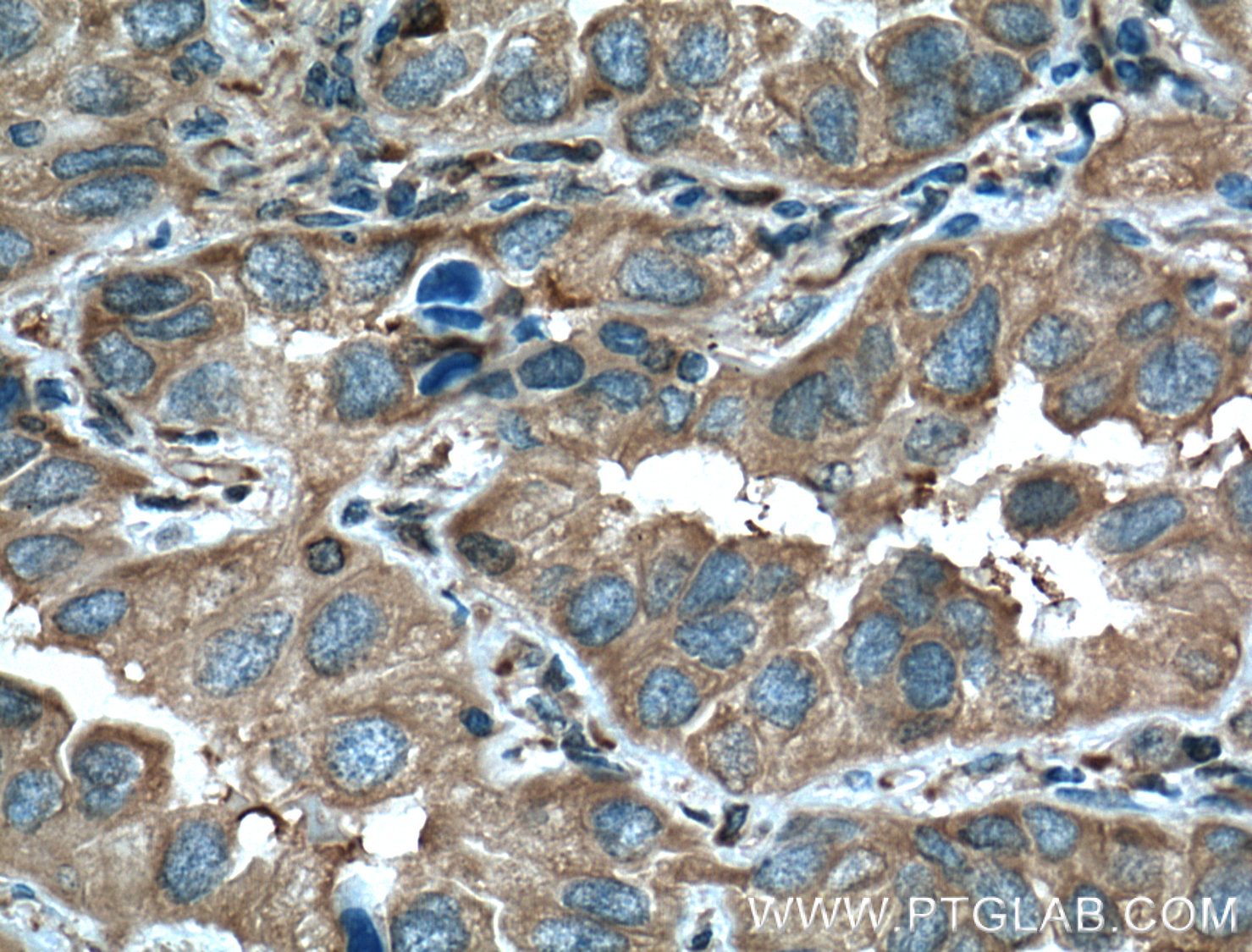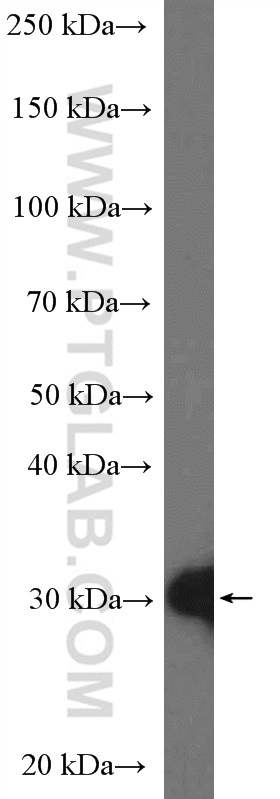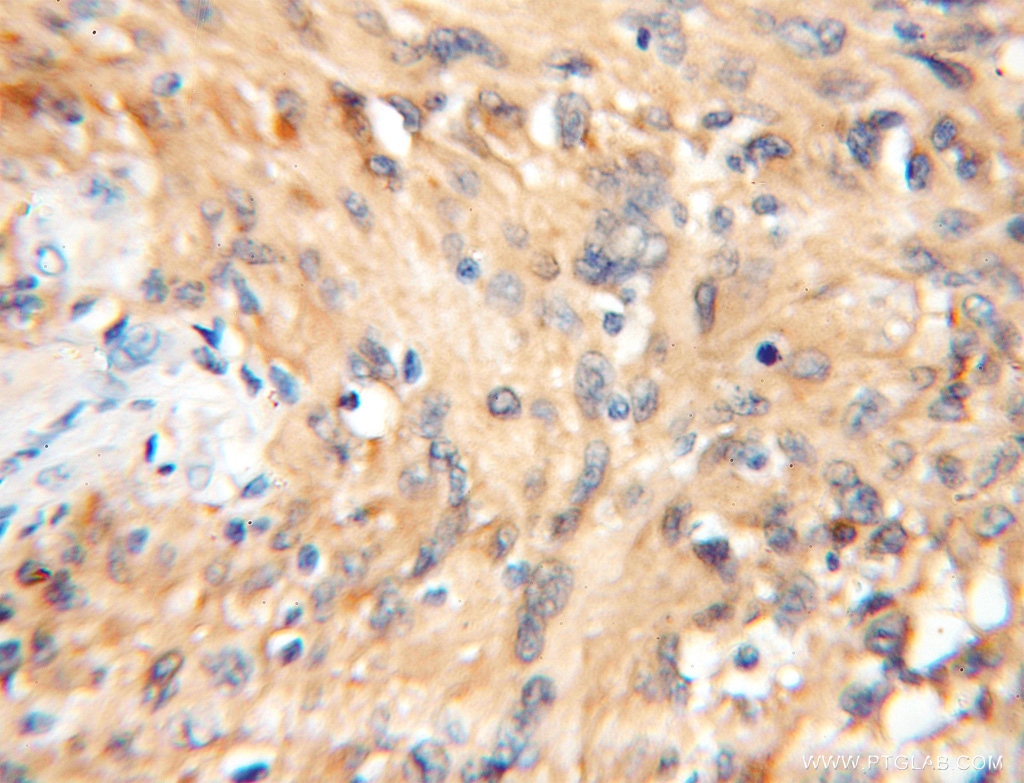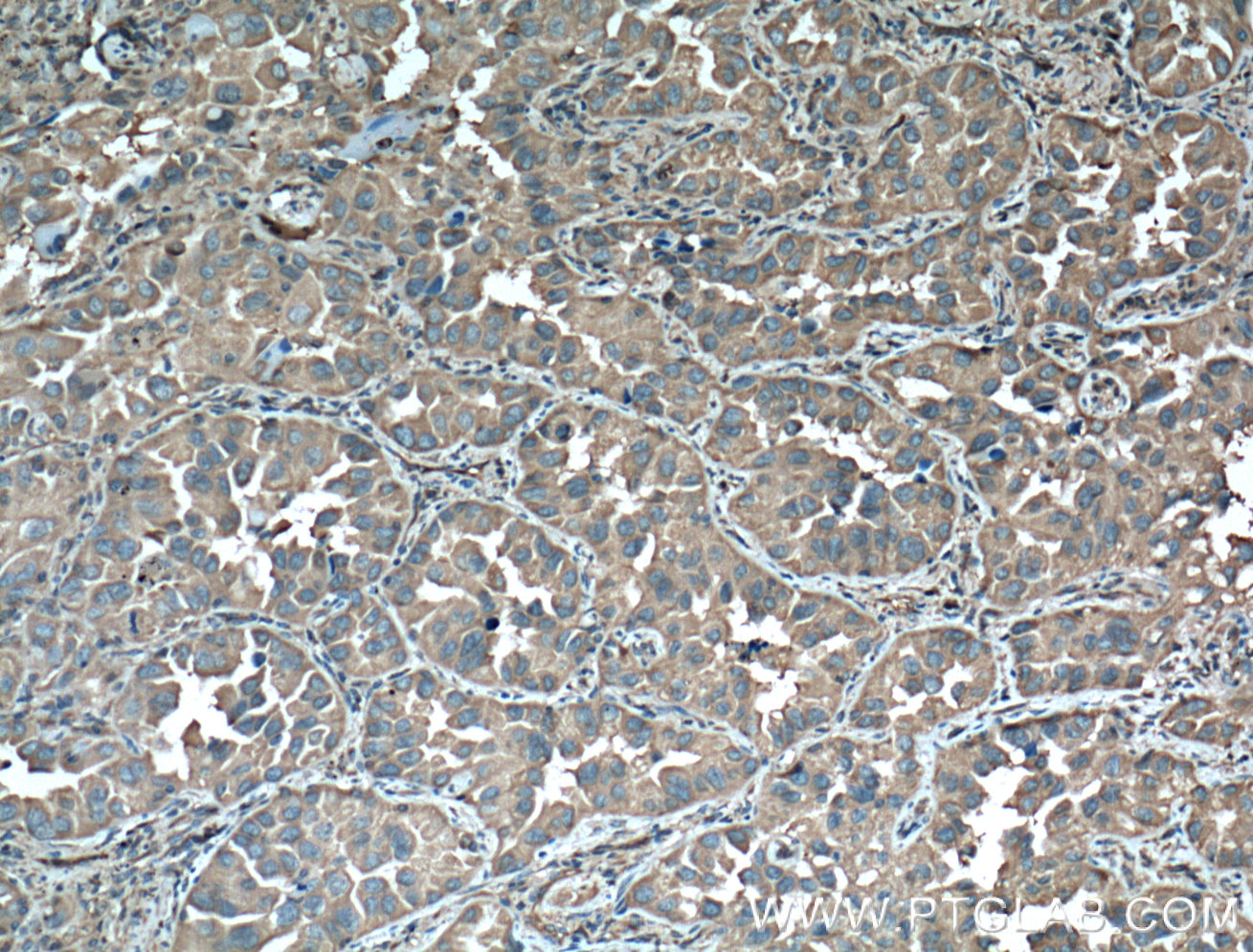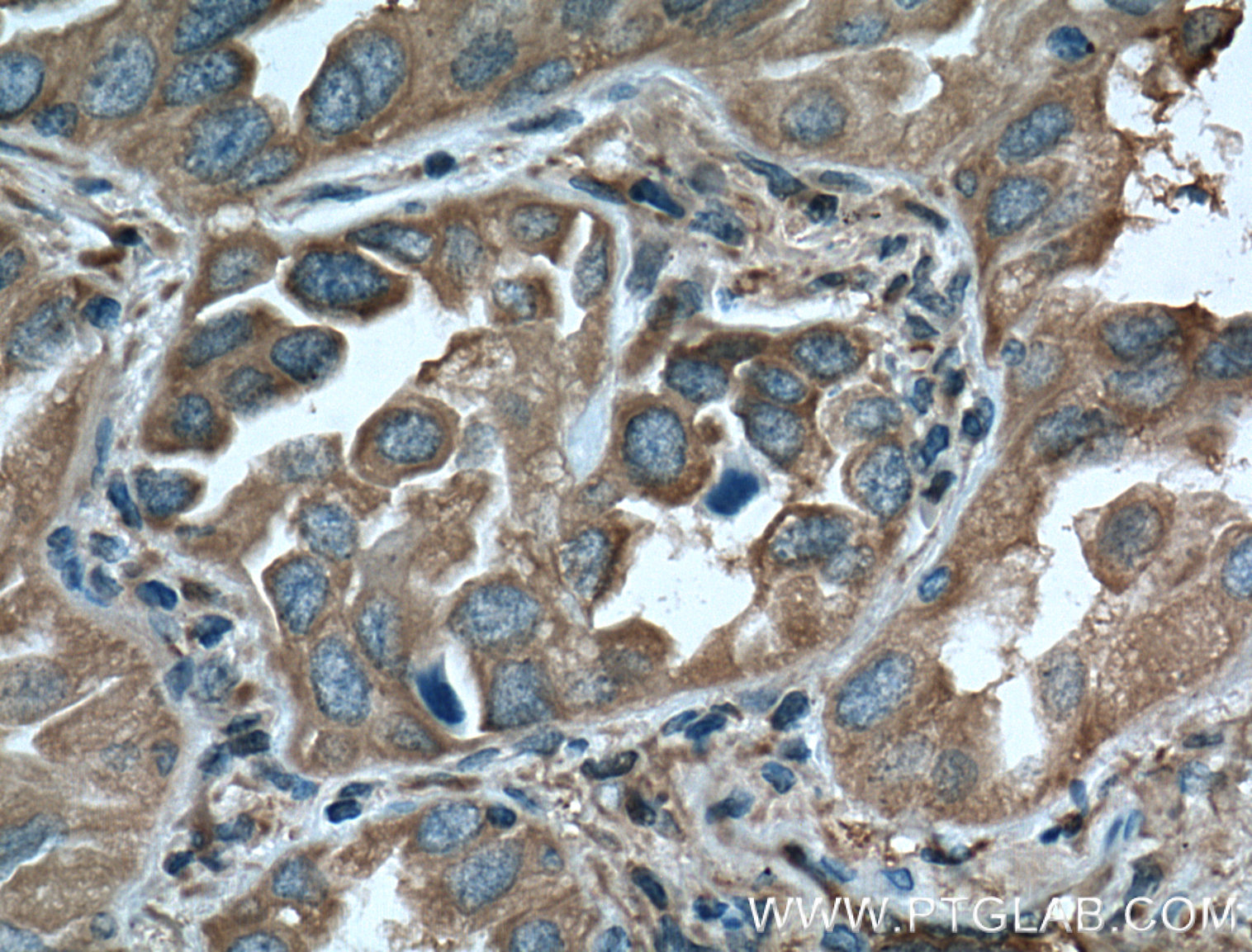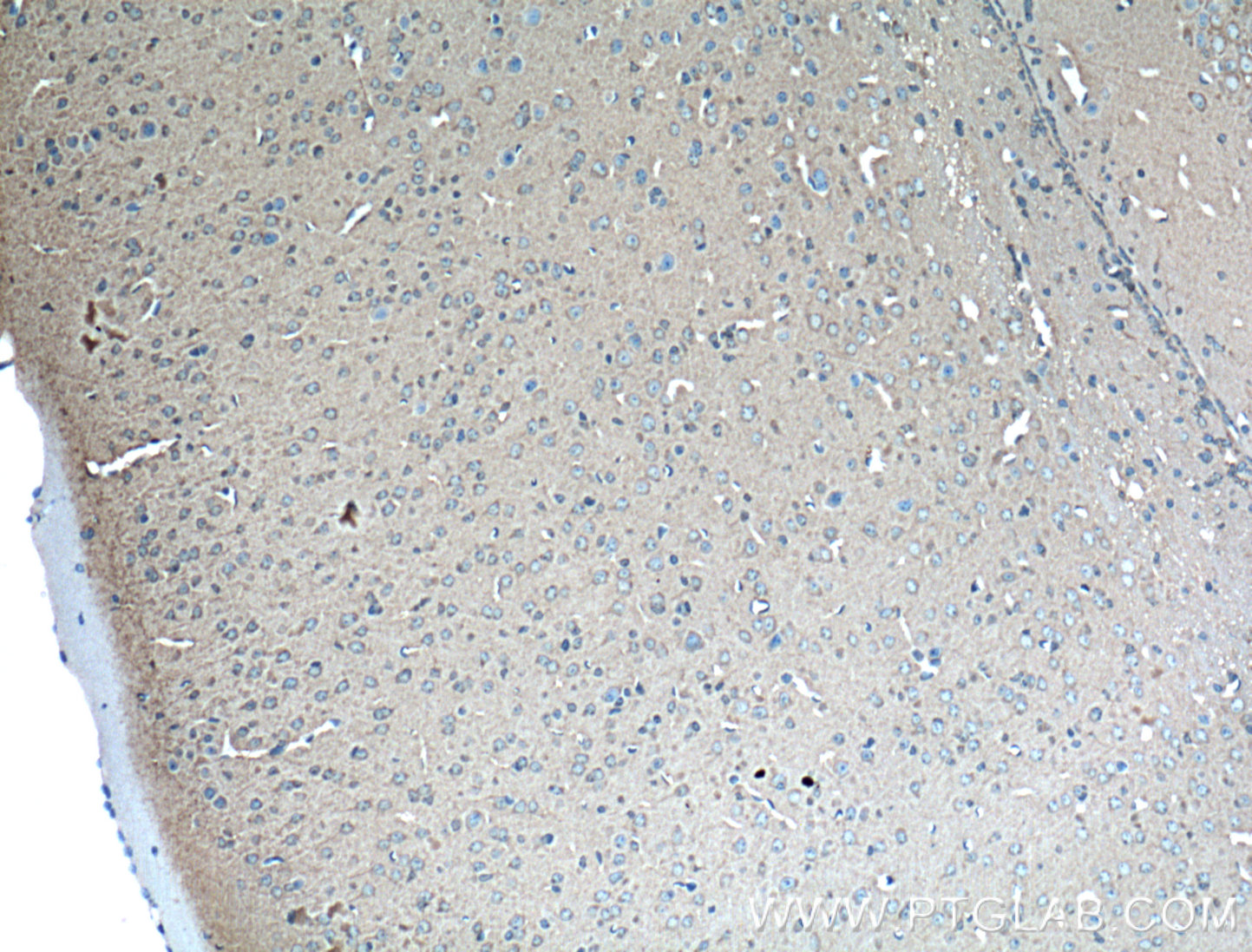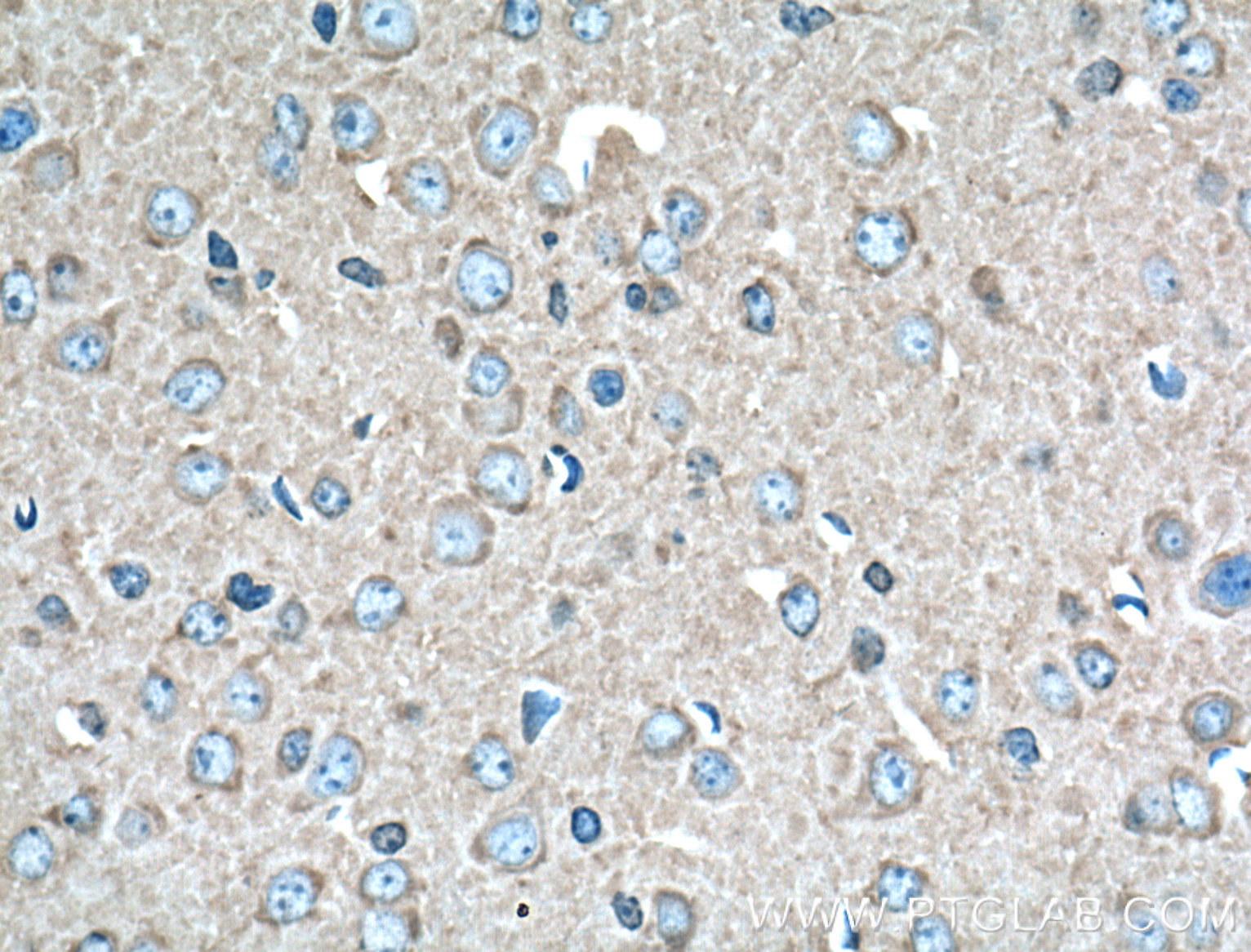验证数据展示
经过测试的应用
| Positive WB detected in | A375 cells, HeLa cells |
| Positive IP detected in | A375 cells |
| Positive IHC detected in | human colon tissue, human gliomas tissue, human lung cancer tissue, mouse brain tissue Note: suggested antigen retrieval with TE buffer pH 9.0; (*) Alternatively, antigen retrieval may be performed with citrate buffer pH 6.0 |
| Positive IF/ICC detected in | HepG2 cells |
推荐稀释比
| 应用 | 推荐稀释比 |
|---|---|
| Western Blot (WB) | WB : 1:500-1:5000 |
| Immunoprecipitation (IP) | IP : 0.5-4.0 ug for 1.0-3.0 mg of total protein lysate |
| Immunohistochemistry (IHC) | IHC : 1:300-1:1200 |
| Immunofluorescence (IF)/ICC | IF/ICC : 1:50-1:500 |
| It is recommended that this reagent should be titrated in each testing system to obtain optimal results. | |
| Sample-dependent, Check data in validation data gallery. | |
产品信息
11648-2-AP targets 14-3-3 Epsilon in WB, IHC, IF/ICC, IP, ELISA applications and shows reactivity with human, mouse, rat samples.
| 经测试应用 | WB, IHC, IF/ICC, IP, ELISA Application Description |
| 文献引用应用 | WB, IF, IP |
| 经测试反应性 | human, mouse, rat |
| 文献引用反应性 | human, mouse, rat, pig, canine |
| 免疫原 |
CatNo: Ag2247 Product name: Recombinant human 14-3-3E protein Source: e coli.-derived, PGEX-4T Tag: GST Domain: 1-255 aa of BC000179 Sequence: MDDREDLVYQAKLAEQAERYDEMVESMKKVAGMDVELTVEERNLLSVAYKNVIGARRASWRIISSIEQKEENKGGEDKLKMIREYRQMVETELKLICCDILDVLDKHLIPAANTGESKVFYYKMKGDYHRYLAEFATGNDRKEAAENSLVAYKAASDIAMTELPPTHPIRLGLALNFSVFYYEILNSPDRACRLAKAAFDDAIAELDTLSEESYKDSTLIMQLLRDNLTLWTSDMQGDGEEQNKEALQDVEDENQ 种属同源性预测 |
| 宿主/亚型 | Rabbit / IgG |
| 抗体类别 | Polyclonal |
| 产品类型 | Antibody |
| 全称 | tyrosine 3-monooxygenase/tryptophan 5-monooxygenase activation protein, epsilon polypeptide |
| 别名 | 14-3-3E, YWHAE, 14-3-3 protein epsilon, 14-3-3epsilon |
| 计算分子量 | 255 aa, 29 kDa |
| 观测分子量 | 29-32 kDa |
| GenBank蛋白编号 | BC000179 |
| 基因名称 | 14-3-3E |
| Gene ID (NCBI) | 7531 |
| RRID | AB_2217787 |
| 偶联类型 | Unconjugated |
| 形式 | Liquid |
| 纯化方式 | Antigen affinity purification |
| UNIPROT ID | P62258 |
| 储存缓冲液 | PBS with 0.02% sodium azide and 50% glycerol, pH 7.3. |
| 储存条件 | Store at -20°C. Stable for one year after shipment. Aliquoting is unnecessary for -20oC storage. |
背景介绍
14-3-3 Epsilon (also known as YWHAE) is a member of 14-3-3 proteins which were the first phosphoserine/phosphothreonine-binding proteins to be discovered. 14-3-3 family members interact with a wide spectrum of proteins and possess diverse functions. Mammals express seven distinct 14-3-3 isoforms (gamma, epsilon, beta, zeta, sigma, theta, tau) that form multiple homo- and hetero- dimmers. 14-3-3 proteins display the highest expression levels in the brain, and have been implicated in several neurodegenerative diseases, including Alzheimer's disease and amyotrophic lateral sclerosis. This antibody was raised against full-length 14-3-3 Epsilon.
实验方案
| Product Specific Protocols | |
|---|---|
| IF protocol for 14-3-3 Epsilon antibody 11648-2-AP | Download protocol |
| IHC protocol for 14-3-3 Epsilon antibody 11648-2-AP | Download protocol |
| IP protocol for 14-3-3 Epsilon antibody 11648-2-AP | Download protocol |
| WB protocol for 14-3-3 Epsilon antibody 11648-2-AP | Download protocol |
| Standard Protocols | |
|---|---|
| Click here to view our Standard Protocols |
发表文章
| Species | Application | Title |
|---|---|---|
Nat Immunol A phosphomimetic-based mechanism of dengue virus to antagonize innate immunity. | ||
Nat Commun Endothelial discoidin domain receptor 1 senses flow to modulate YAP activation | ||
Cell Host Microbe Zika Virus NS3 Mimics a Cellular 14-3-3-Binding Motif to Antagonize RIG-I- and MDA5-Mediated Innate Immunity. | ||
EMBO J AKT2 reduces IFNβ1 production to modulate antiviral responses and systemic lupus erythematosus. | ||
Haematologica Comparative analysis of ChAdOx1 nCoV-19 and Ad26.COV2.S SARS-CoV-2 vector vaccines. | ||
Neurobiol Dis Stabilization of 14-3-3 protein-protein interactions with Fusicoccin-A decreases alpha-synuclein dependent cell-autonomous death in neuronal and mouse models |

